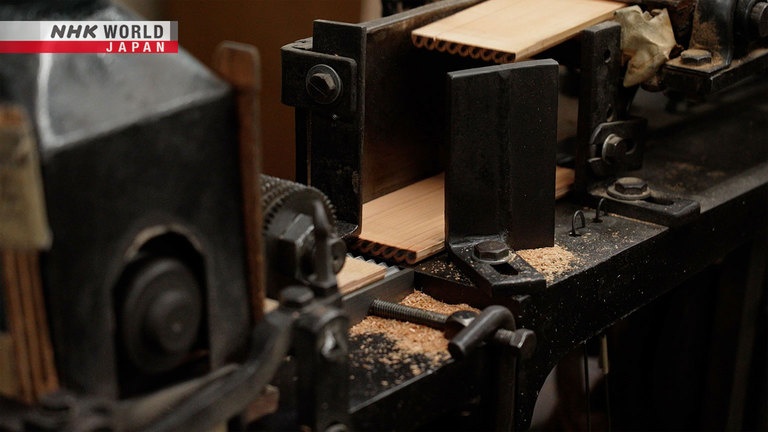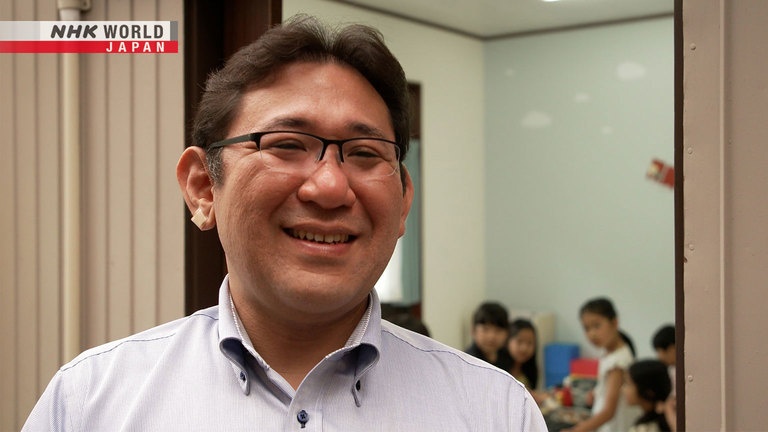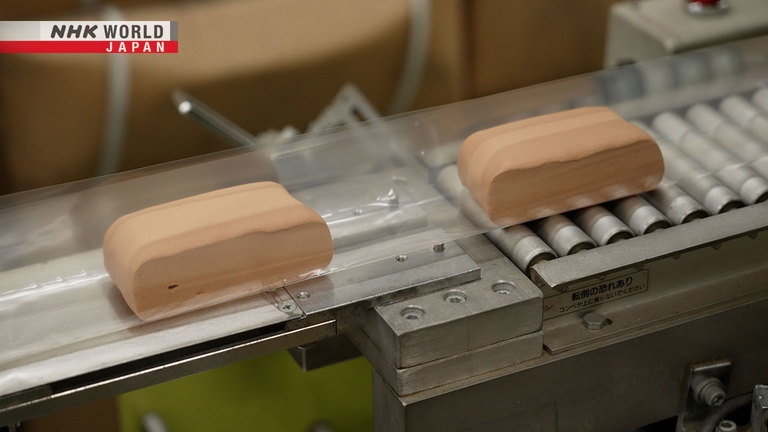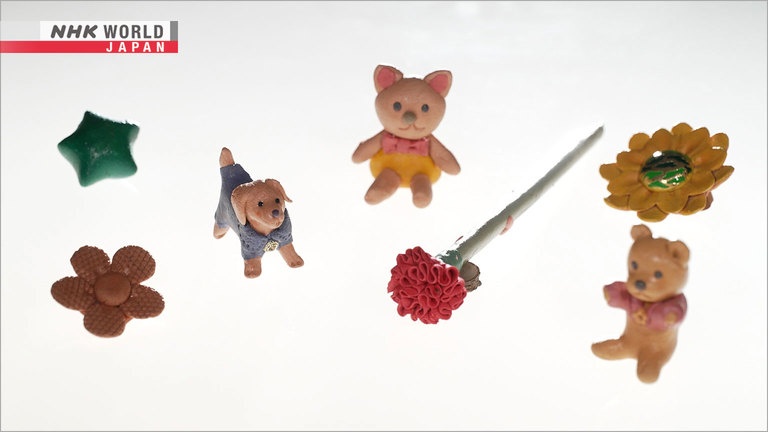Sawdust Clay
A downtown Tokyo pencil maker offers a unique product. Clay made from sawdust. Working to find a way to make use of the waste generated in the pencil making process, current president, Sugitani Ryuichi, developed the clay after years of trial and error. It feels just like ordinary clay, and the glue used as a binder is biodegradable, so it's eco-friendly. Better still, when it dries, it behaves just like wood. Child-safe, it's also popular with local childcare facilities.




Transcript
Since ancient times, the Japanese have believed that a life force resides in all creations.
Valuing and caring for the things we use, a "Zero Waste Life."
Pointing the way to better living for a new era.
What's most important is having fun,
knowing it's eco-friendly is a plus.
A playtime essential that can be shaped into just about anything... clay.
But the clay these children are playing with is unusual, unlike any other.
It smells just like wood.
If I made a tree it'd look real.
Indeed, this clay isn't made from earth, but from wood.
It's made with sawdust produced when making a certain item we all use regularly.
Pencils.
Katsushika, downtown Tokyo: the location of the pencil factory that developed the clay.
Sugitani Ryuichi, company president.
- We just got an additional order.
- Really?!
Sugitani is the 5th-generation president of this firm in business for over 70 years.
These are the pencil blanks
imported from overseas.
In this form, they become pencils.
These are the shavings.
It seemed like such a waste,
so we tried to use them for clay.
The pencil making process produces large quantities of sawdust.
Nearly 40% of the material used becomes waste, and this is reborn as clay.
Sawdust collected in the dust collection system is processed into a fine powder.
First, water is added.
Then, to make it more like clay...
This is glue.
Like the kind they use for slime.
The glue is biodegradable, so it has less impact on the environment.
Sawdust is added and it's thoroughly mixed.
It's looking good...
After working for 30 minutes, the sawdust has become clay.
Lumps of clay are cut off and put in a machine that forms them into bars.
These are then placed on a conveyor belt where they're cut to the desired size.
How's it going?
- It's a little soft.
- Yes, you're right.
But the condition isn't bad.
I think it's fine.
Sometimes it's softer or harder.
Changes with temperature are fine.
And the smoothness is good.
Finally, once the bag's seal has been checked, the product is ready.
It can be carved with a knife,
or smoothed with sandpaper.
When it dries it's basically wood.
Having similar properties to the original wood material when dry makes this product unique.
Hearing people say, "It's eco-friendly,
and useful too," makes me happy.
A clever idea born from sawdust.
Its development goes back 20 years.
It was the creation of the former company president, Sugitani Kazutoshi, Ryuichi's father.
It came about because of the rising price of wood, which drove up the cost of pencil production.
At the time, I just burned
the sawdust in the furnace.
But it always felt wasteful.
Prices go up.
Wood material was costing us
many times more than it used to.
And we were throwing half of it away,
so turning it into a product could help.
"How to make use of the waste?"
As he pondered this question, he got the idea to make clay.
The one he put in charge of developing it was his son, Ryuichi, who had just graduated university.
Not really knowing where to begin, he experimented with mixing sawdust and glue.
After mixing 10 minutes it was no good,
so I added more, but it just hardened.
It was hard to figure out.
Even at home I kept thinking about it,
so it felt like work all the time.
To avoid financial burden on the factory, he built the machine himself.
A machine maker would have charged
hundreds of thousands of US dollars.
But doing it myself cost around $2,000.
After 2 years of trial and error, product development was complete.
But he'd made a slight miscalculation...
In the time it took to make 1,000,
we'd taken orders for 300,000 units.
It was a sort of happy scream.
We ran through the production process
dozens of times a day,
and that experience paid real dividends.
Having Ryuichi do it instead of me
helped him to grow.
It was also good for our company.
The sawdust clay was born as the torch passed from father to son.
They began marketing it in 2001, improving overall sales.
Made in a small downtown factory, the product was a hit with local residents.
Okay, let's begin.
At an area childcare facility, they hold a sawdust clay workshop once a month.
What does it smell like?
Pencils.
Pull it out on the count of three.
Here we go! Look everybody!
One, two, three!
Okay, you did it!
Pencil shavings are something
school children are very familiar with.
We use it because it's a great way
for them to learn about ecology.
Using eco-friendly materials is great,
and it's different from ordinary clay.
So, I figured that it would be
a fun experience for my children.
You're better at it than me.
Sugitani came to see the workshop for himself.
Instead of pulling on it,
make it into a ball like so.
If you roll it out to make it longer
then it won't crack.
A lot of the local kids use our clay.
So you could say the pencil shavings
we use have grown into a tree.
And the branches keep on spreading.
Today, father and son are discussing potential new products.
It's an alternative to paints.
If we take our time it'll work.
It's definitely a good product.
Watercolor pencils.
With a refillable core, it's an eco-friendly product.
Pencil shavings make waste.
You don't need to sharpen these.
Even the shavings work as paint.
You can use 100% of the product.
It's ideal for the coming era.
Even after coming up with one-hit product, the sawdust clay, the two continue working to develop new ideas.
Fundamentally, the product
needs to make people happy.
Instead of throwing things out,
a little ingenuity goes a long way.
Something new can come of it.
Finally, he took us to a special spot on the company grounds.
Our pencil shrine.
Once pencils are too short
they can't be used anymore.
We hold a ceremony here each year
to honor all the used-up pencils.
Pencils aren't flashy or impressive.
But I believe we can take pride
in our role in increasing knowledge
through the products we sell.
That's something worth preserving.
A worthy inheritance.
Valuing all things, their zero-waste efforts continue.